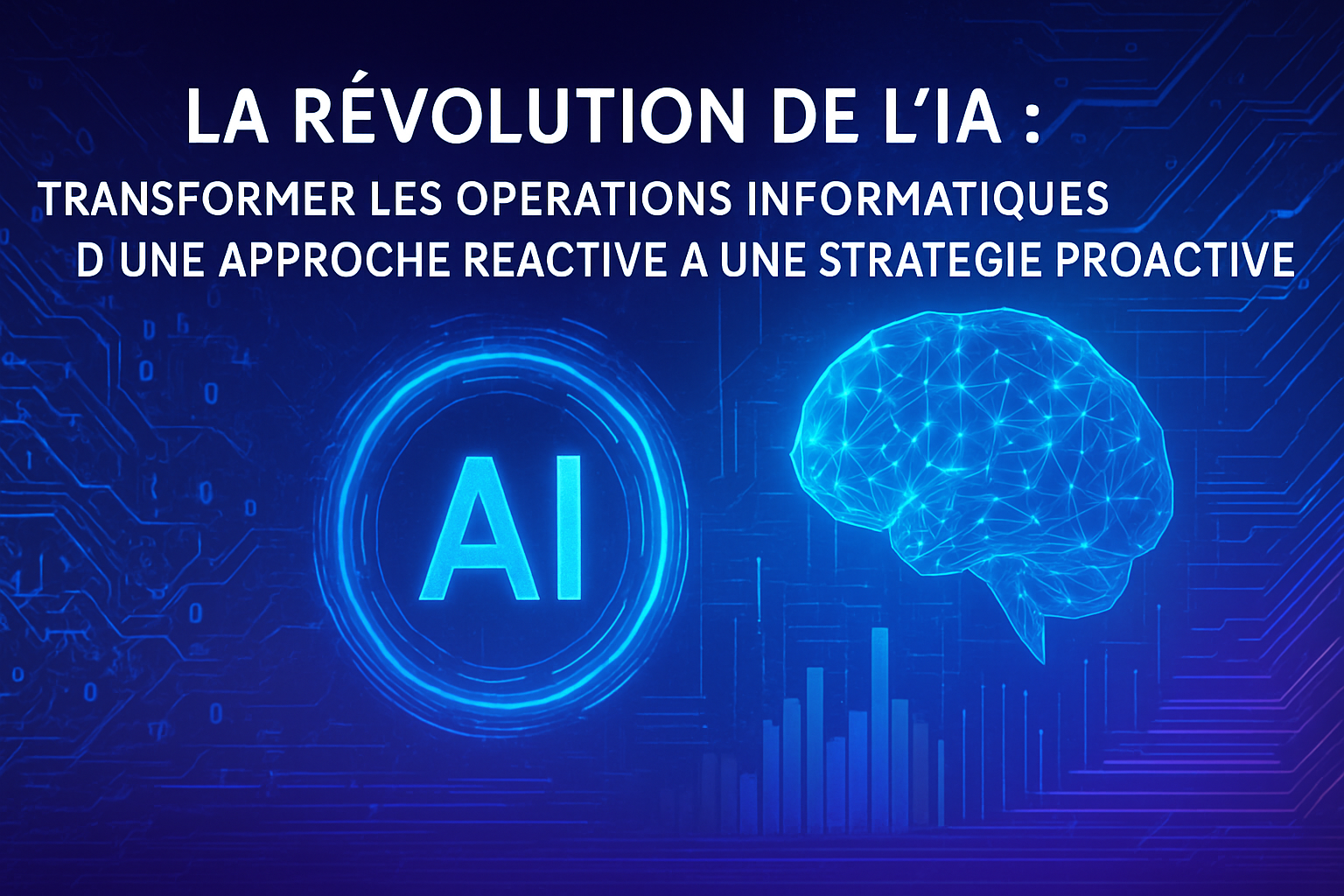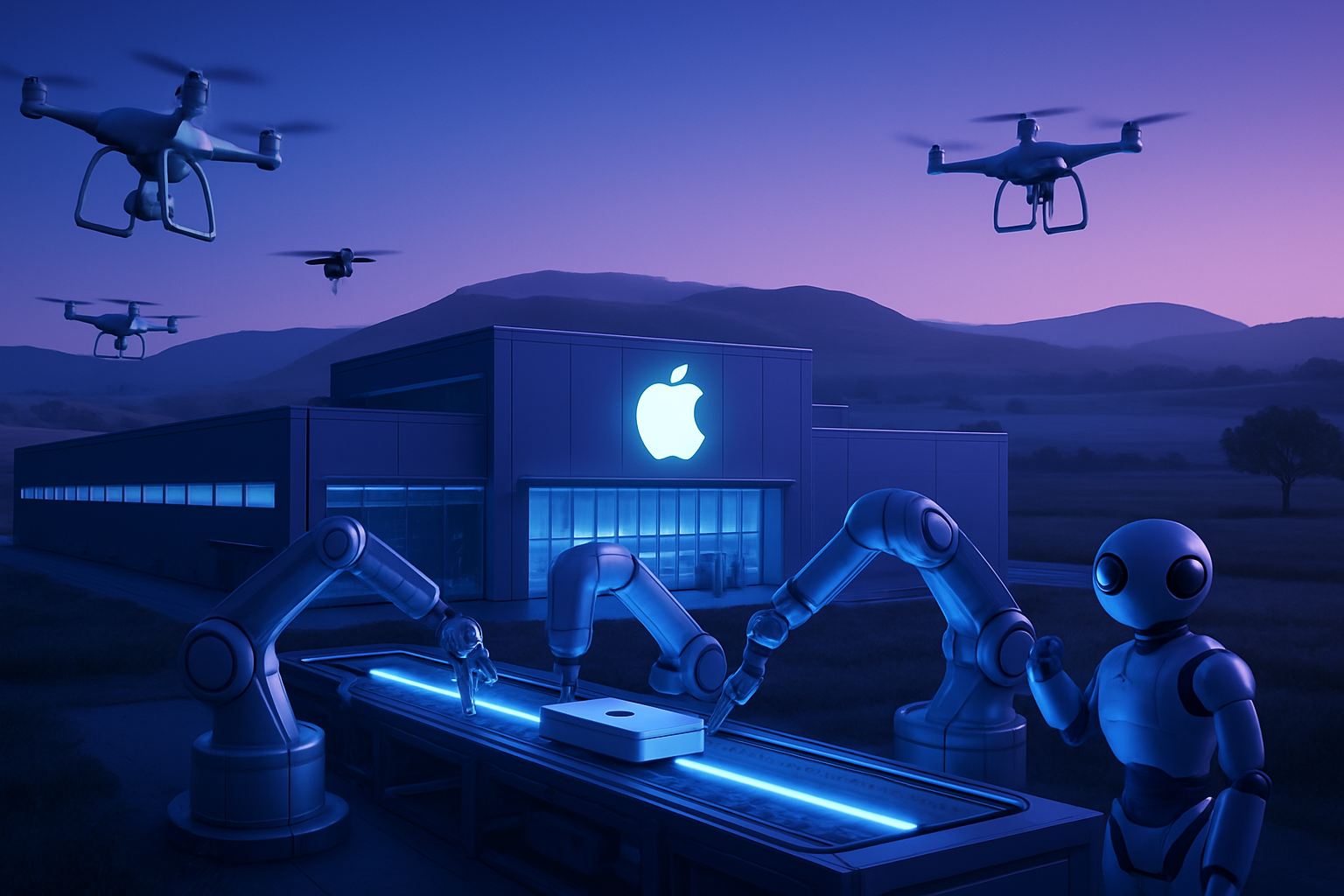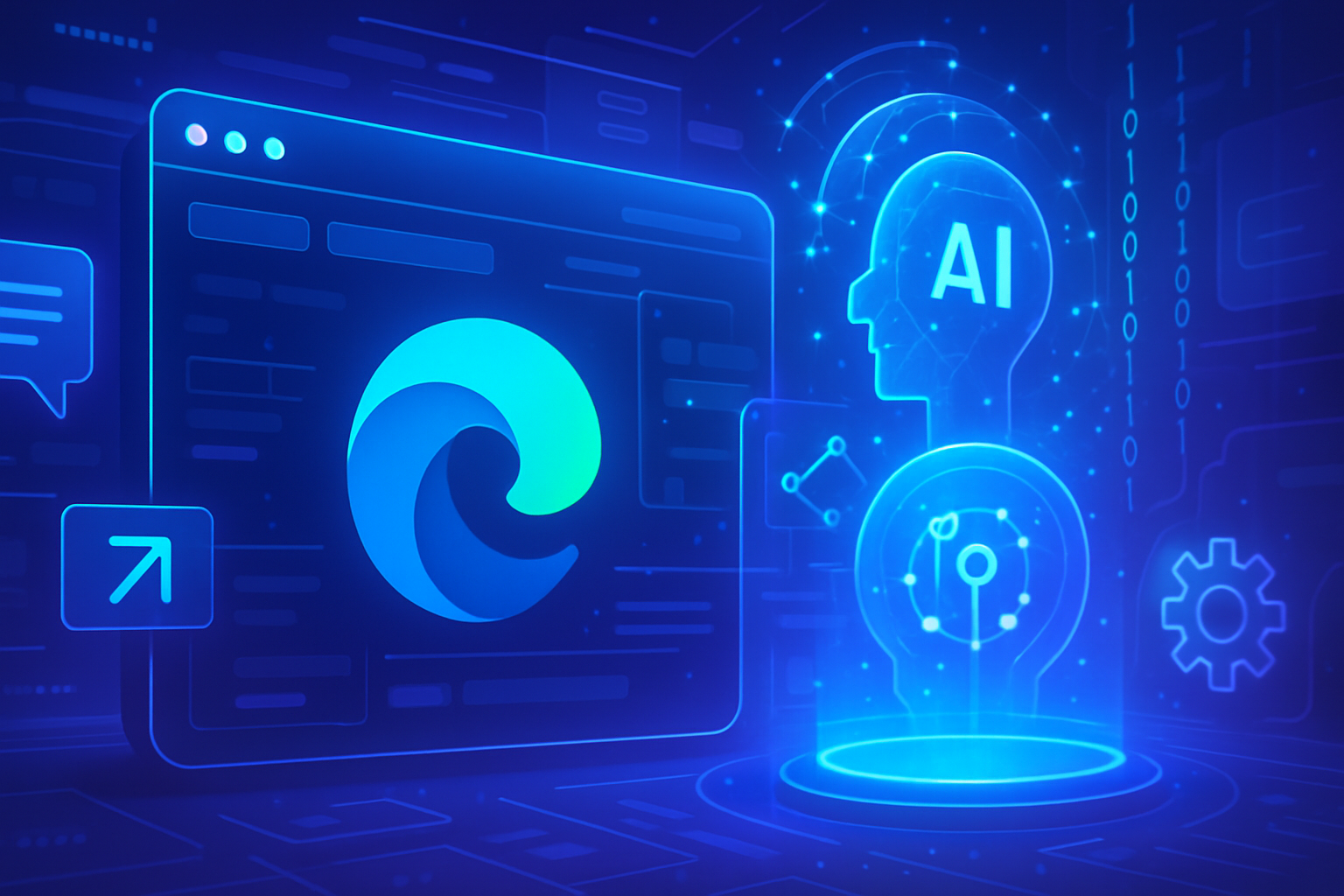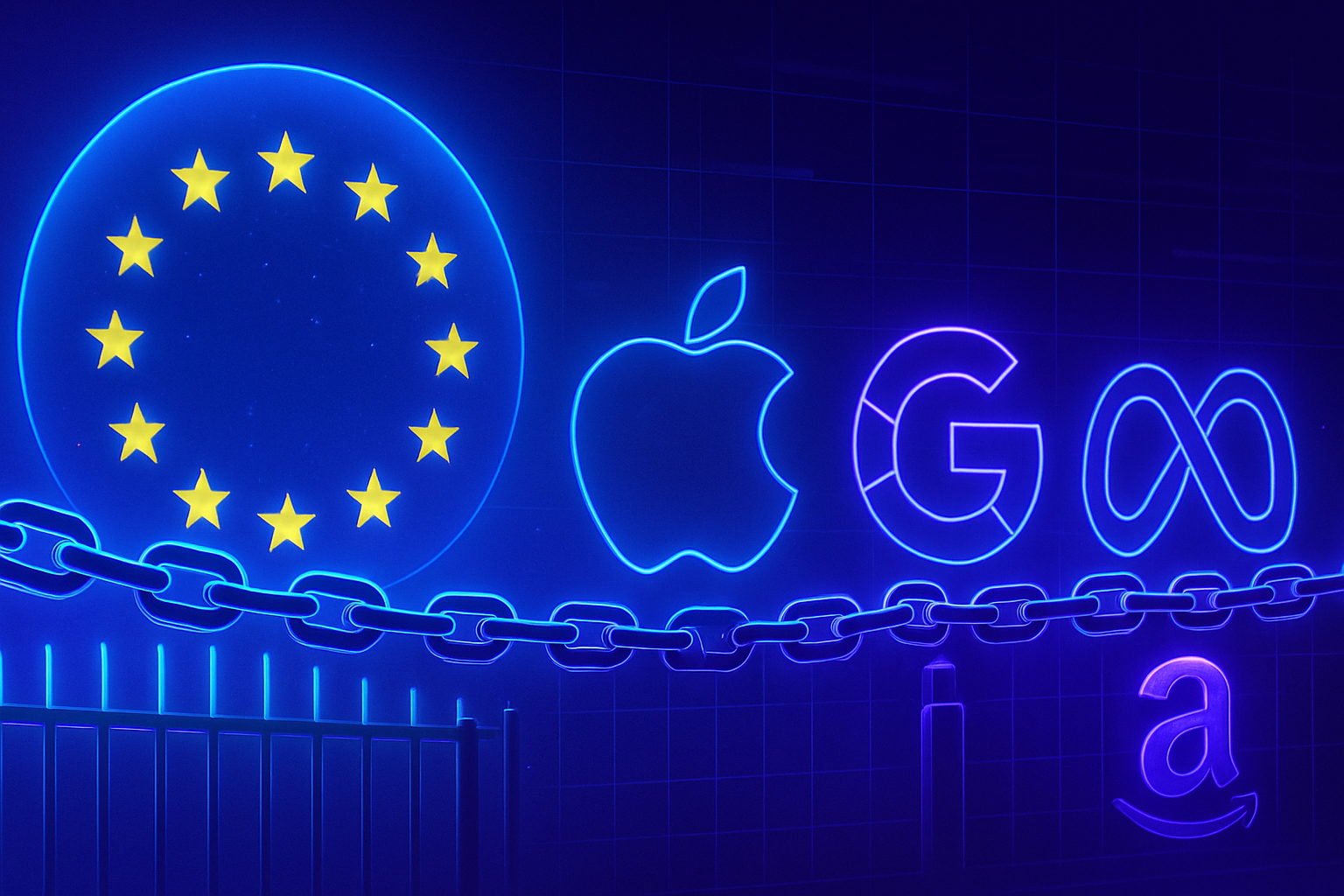An unprecedented transformation is taking place in the IT sphere. The rise of artificial intelligence is redefining how companies manage technical challenges. IT leaders are determining strategies to shift from a reactive mode to an innovative approach. Optimizing problem resolution times is becoming essential. Companies are leveraging the advanced analytical capabilities of AI to anticipate failures. This shift towards a proactive model offers a multitude of benefits, ranging from cost savings to significant improvements in services. Integrating AI as a pillar of IT operations is now a necessity. The transition requires a re-evaluation of existing processes and the adoption of a culture of continuous innovation. Thus, in a constantly evolving world, the major challenge lies in the ability to adapt quickly.
The transformation of IT operations
Chief Information Officers (CIOs) aim to optimize IT problem resolution while avoiding an increase in employee numbers. The immense interest in AI adoption is part of this quest for efficiency. Companies have long resorted to tools such as automation and self-service portals to tackle common IT issues.
Integration of AI in IT support
A study conducted by SolarWinds analyzes the impact of AI tools on IT systems. Over 2,000 systems and 60,000 datasets were scrutinized over a year, from August 2024 to July 2025. This report examined how AI can facilitate tasks such as automatic response suggestions for tickets, searching for useful articles, and drafting problem summaries.
Significant improvement in resolution times
The results show impressive efficiency gains. Before the implementation of AI, resolving an issue took approximately 27.42 hours. With the introduction of AI, this time is reduced to 22.55 hours, representing an improvement of 17.8% in speed and a saving of nearly 4.87 hours per issue.
Substantial economic impact
For a medium-sized IT team handling around 5,000 issues annually, time savings amount to 24,350 hours per year. At an average cost of $28 per hour for a support agent, this translates to savings exceeding $680,000. IT teams can thus focus on more complex tasks instead of getting bogged down by daily concerns.
Marked differences between companies
The report indicates a clear distinction between companies integrating AI into their support processes and those that do not adopt it. Companies using AI resolve tickets in an average of 22.55 hours, compared to 32.46 hours for their competitors not using AI, illustrating a difference of 30.5%. This equates to nearly 10 hours saved per issue.
Limitations of AI
It is important to note that AI is not a magic solution for IT operations. Its effectiveness depends on having well-established processes and a willingness to undergo company-wide transformation. The best-performing companies, known as the “Top 10 AI Adopters,” have succeeded in reducing their resolution times from 51 hours to 23 hours by adopting AI as an essential component of their operations.
Organizational culture and processes
The secret of their success lies in their ability to integrate AI into their everyday lives rather than viewing it as an ancillary project. These companies have been able to create a culture focused on tools such as self-service portals and automation, thereby enhancing the efficiency of support teams. AI reaches its full potential when organizational changes and continuous improvements are implemented.
Recommendations for CIOs
The findings from the research conducted by SolarWinds highlight the effectiveness of AI in IT support operations. For leaders, it is wise to conduct a preliminary audit to assess the current time taken to resolve problems. The average for companies not using AI is 32.46 hours.
Institutionalize the use of AI
High-performing users recommend integrating AI into daily operations rather than experimenting sporadically. Such an approach promotes significant changes in workflows and a focus on optimizing performance.
Clarify the role of AI
AI represents a powerful tool for enhancing efficiency, especially when complemented by good IT practices. CIOs must ensure that the knowledge base and automation rules are well-defined, as AI functions optimally when clear processes are in place. By multiplying the number of annual incidents by the time saved of 4.87 hours, an estimation of efficiency gains becomes clear.
The growing disparity between companies that use AI and those that refrain from doing so highlights the necessity for leaders to adapt their operations. The goal is to position IT as a true partner in the success of the company.
For an interesting perspective on AI and its impact, the updating of AI in China is revealing, as are the challenges faced by Reddit writers in this regard.
To deepen the understanding of AI and Big Data dynamics, several events, such as the AI & Big Data expo, are taking place in Amsterdam, London, and California, bringing together industry leaders.
Questions and answers about The AI Revolution: Transforming IT operations from a reactive approach to a proactive strategy
How can AI help reduce IT problem resolution times?
The adoption of AI allows for a decrease in the time required to resolve IT problems. AI-based tools can automatically suggest responses to tickets, facilitate the search for help articles, and summarize problems, contributing to a quicker resolution of incidents.
What are the potential savings achieved by implementing AI solutions in IT support?
Companies can achieve significant savings by integrating AI into their operations. For example, if an IT service handles 5,000 issues per year and saves an average of 4.87 hours per incident, this could represent savings of over $680,000 annually in personnel costs.
What are the prerequisites for successful AI implementation in IT operations?
For AI to be effective, it is essential to have well-established processes and a willingness to make changes at the company level. Integrating AI should be a core part of daily work and not be considered a secondary project.
Is there a significant difference between companies that adopt AI and those that do not?
Yes, companies that utilize AI to manage their tickets resolve issues on average in 22.55 hours, while those that do not use it take about 32.46 hours. This represents a difference of 30.5%, or nearly 10 hours saved per issue.
How can I determine if integrating AI is beneficial for my IT team?
Before investing in AI solutions, it is crucial to assess the average time taken to resolve problems within your team. This will allow you to calculate the potential time and cost savings that AI could generate.
What role does corporate culture play in the successful adoption of AI in IT operations?
A corporate culture focused on automation and self-service portals greatly facilitates AI integration. Teams that have already established good support practices tend to perform better with AI solutions.
Why should AI not be considered a magic solution for IT operations?
AI is a tool that requires solid foundations in terms of processes and IT practices. Without these elements in place, its effectiveness can be limited, and it cannot operate in isolation to resolve all problems.
What measures can be taken to maximize the benefits of AI in an IT department?
Companies should ensure that AI use is integrated into daily routines, examine and adapt their existing processes, and train staff on the best ways to utilize new technologies to improve overall efficiency.






